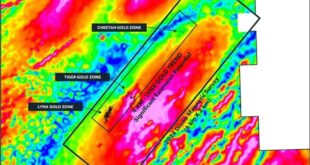What’s the news: Lucknow police will be using a Mobile drone vehicle (MDV) equipped with facial recognition to manage crowds during election rallies and identify troublemakers, reported the Times of India. As per the report, once the system receives the required validation, five more such MDVs will be introduced into the Commissionerate Police fleet. What’s interesting is that on top of not providing the tender details for this project, the government still does not have an answer as to which department is responsible for the use of drones in policing.
Here’s what we know about the MDV: With a capacity to remain airborne for 10 hours, the MDV will send live-feedback to a nearby police car for real-time surveillance. The MDV will also be linked to over 9.32 lakh criminal records, digitized within Trinetra’s database – the Uttar Pradesh government’s surveillance system that uses facial recognition technology.
According to Joint Commissioner, law and order, Upendra Kumar Agrawal, MDVs will soon be deployed during “major events,” including processions, cricket matches, and the forthcoming Lok Sabha elections.
Several questions unanswered about the use of drones
Last year, MediaNama had raised a list of questions about the usage of drones in policing such as:
- Who sanctions and oversees the usage of drones in policing?
- What kind of data is collected by the police using these drones?
- For how long is the data collected?
- What are the privacy-securing measures to protect citizens’ fundamental rights from such use of drones?
- Are there provisions in place to regulate the use of drones in policing? If not, why?
- Can residents of India ask for their data to be deleted in such situations?
- What are the implications of data collection by ‘police drones’ in light of the Criminal Procedure (Identification) Act, 2022?
The questions seemed pertinent back then since the law enforcement agencies were talking about tear-gas-shell-dropping drones to “control protests” in some parts of the country. Cut to February, 2024 this possibility became a reality with the Haryana police using drones to drop tear gas shells on farmers protesting near Shambhu border on February 13. Yet the question of accountability still remains unanswered.
In 2020, MediaNama had filed two RTIs to the Delhi police regarding its use of drones to film protestors of the Citizenship Amendment Act. This was important because the then regulations around drone usage called for a clearance before a drone takes off. However, the police evaded the questions either stating that it did not use drones in such a manner (contradicting PTI reports) or that it did not maintain the information that MediaNama asked for.
With the RTI law now diluted following the amendment introduced in the Digital Personal Data Protection Act, it becomes easier for law enforcement agencies to avoid such questions. Yet with leading drone organisations like IdeaForge talking about the growing demand for drones among law enforcement agencies, it seems pertinent that the government answer the questions on the accountability of drone usage for policing purposes.
Also Read:
STAY ON TOP OF TECH NEWS: Our daily newsletter with the top story of the day from MediaNama, delivered to your inbox before 9 AM. Click here to sign up today!
 Unmanned Aerial Vehicle The latest drone news
Unmanned Aerial Vehicle The latest drone news




